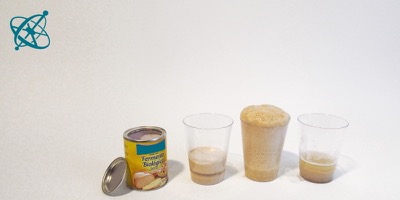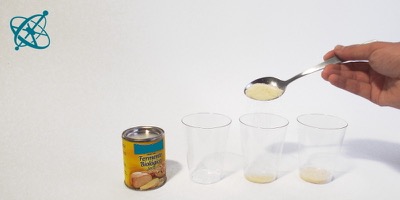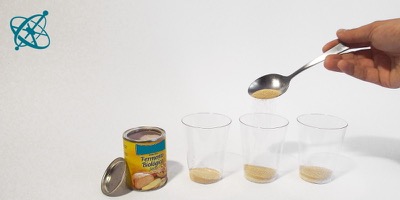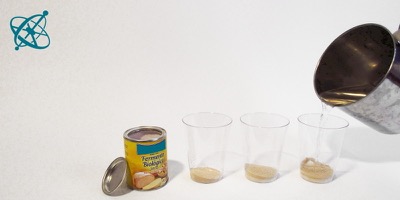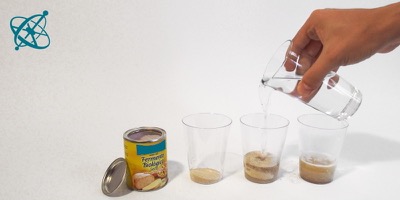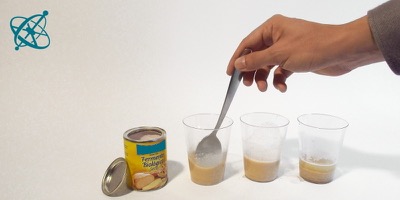 www.sciensation.org | Ciênsação hands-on experiments are published as Open Educational resources under a Creative Commons Attribution-ShareAlike 4.0 International License.
www.sciensation.org | Ciênsação hands-on experiments are published as Open Educational resources under a Creative Commons Attribution-ShareAlike 4.0 International License.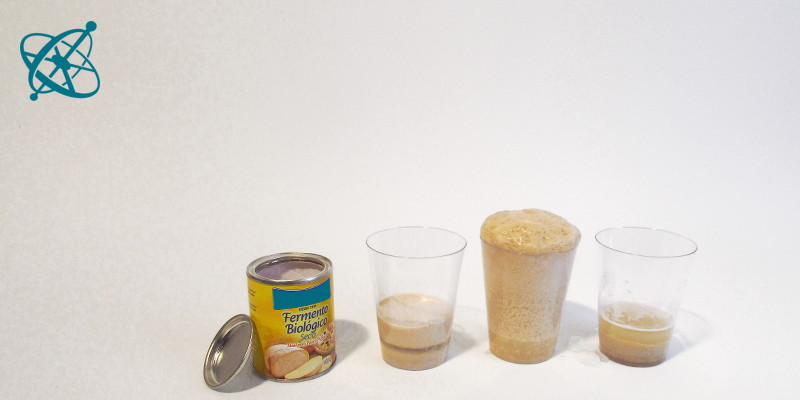
Is yeast alive? Let's see.
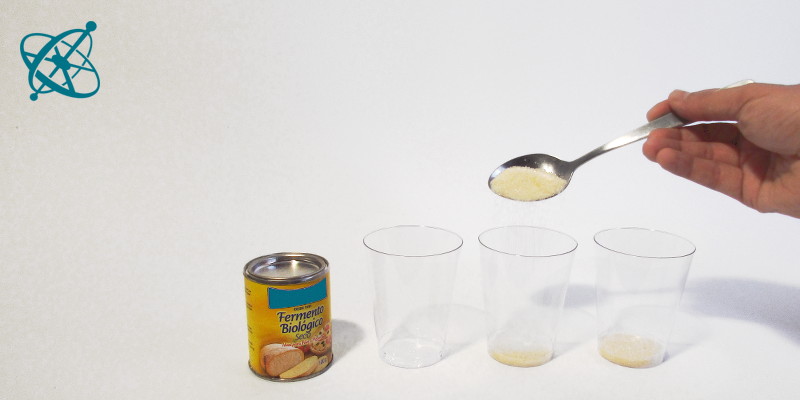
In two cups add a bit of sugar.
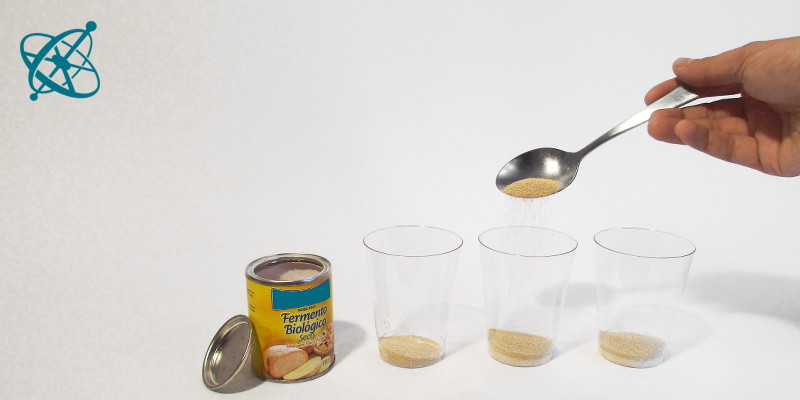
Then add a tablespoon of yeast to all three.
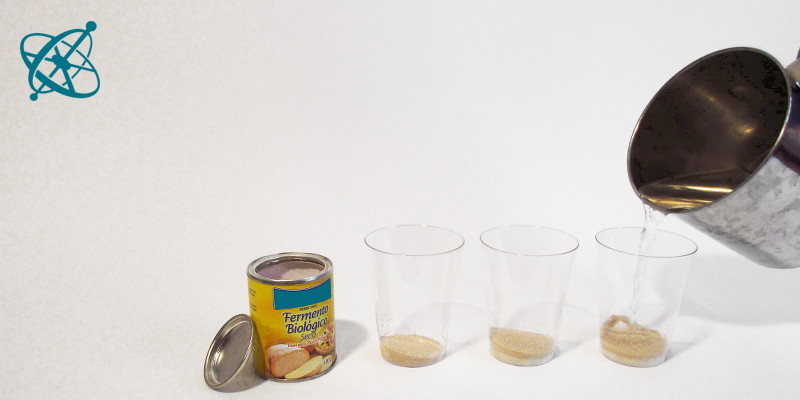
Pour in one cup hot water,…
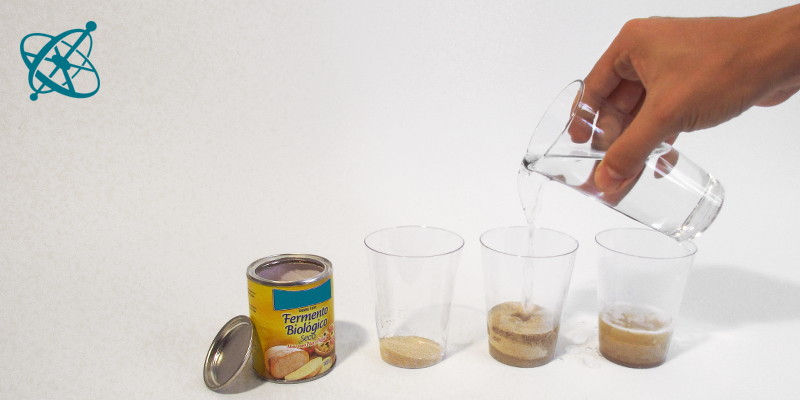
…and in the other two lukewarm water.
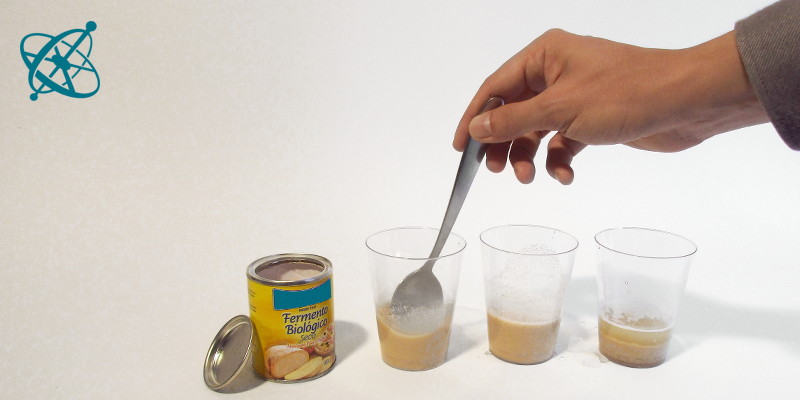
Stir and observe for a few minutes.
Yeast's feast
Yeast is not a chemical reagent, but consists of unicellular microorganism that want to be treated nicely to do their job: Only if they have enough to eat and a comfortable ambient temperature will they produce those gas bubbles in the bread that make it softer.
Biological yeast consists of living microorganism with a metabolism.
Designing experiments effectively.
Dry biological yeast
Sugar
Warm and hot (above 65˚C) water, for safety reasons avoid boiling water
Arrange for warm (around 35˚C) and hot (above 65˚C) water, e.g. in thermos flasks. To avoid accidents with hot water, you may prefer to walk from group to group and pour the water yourself into the glasses your students have prepared: hot water in one of the glasses with yeast and sugar and warm water in the other two.
Drop in each of 3 glasses a tablespoon of biological yeast. In two of theses glasses add a tablespoon sugar. Wait for your teacher to pour warm and hot water into the glasses.
1. What happens in the glass with hot water?
2. What is the role of sugar?
3. What happens to the yeast in hand-warm water with sugar?
4. What can you conclude from the experiment, and why did you need three cups for this?
What effect do high temperatures normally have on chemical reactions?
› They accelerate the reaction.
Why do you boil water to make it potable?
› To kill harmful microorganism.
What does the hot water to the yeast?
› It kills it, therefore no activity (foam) can be seen.
Is there more foam forming with or without sugar?
› With sugar, but only for living yeast (not killed by hot temperatures).
What does the yeast do with the sugar?
› It digests it.
Where does the gas in the bubbles come from?
› From the metabolism of the microorganism.
What do you compare in this experiment?
› The effect of hot water vs. warm water and sugar vs. no sugar.
The glass with sugar alimenting the yeast will show bubbles in the yeast and form a foam due to the gases produced by the metabolism of the microorganism. If this was simply a chemical reaction, the cup with cooking water should show the same result even faster. Yet, since the cooking water killed the yeast, the dead microorganisms just drop to the bottom. The glass without sugar shows almost no reaction because the microorganism have little to 'eat' (only what the manufacturer put into the product).
The three cups thus allow for two comparisons (hot vs. warm water, sugar vs. no sugar) in a single experiment.
